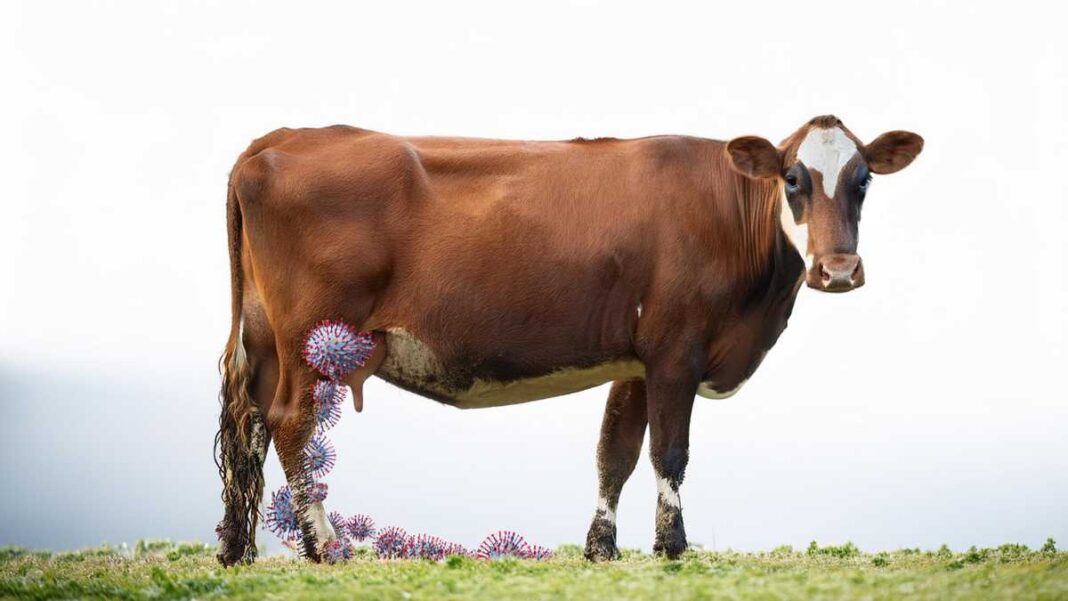The new findings trigger the ongoing debate about raw milk consumption and its potential risks.
The H5N1 bird flu outbreak in cows is likely being spread via milking rather than through respiration, according to a new study published in the journal Nature.
Cows infected through their udders had more severe disease and released more viral particles in their milk than those infected through their nose and mouth.
Viral shedding through milk can reach nearly “1 billion per milliliter,” the study’s senior author, Jurgen A. Richt, distinguished professor at Kansas State University and director of the Center of Excellence for Emerging and Zoonotic Animal Diseases, told The Epoch Times.
In contrast, the study found little evidence of viral shedding of H5N1 viruses through the respiratory tract. There was also no clear sign of airborne infections among calves.
The new finding also triggers the ongoing debate about raw milk consumption and potential risks.
The researchers also found that various avian H5N1 viruses may cause bovine influenza.
When the avian H5N1 influenza strain jumped to cows, the virus mutated on one of its proteins, enabling it to allow it to infect cows more efficiently. It was assumed that only H5N1 viruses with the mutation could infect cows, but avian viruses not containing the mutations also caused infections of similar severity, the authors found.
A New Bovine Influenza Virus
Since March, researchers have been investigating the H5N1 influenza outbreak that occurred after the avian H5N1 virus—which has been shown to infect mammals like ferrets and minks—seemingly jumped to cows in Texas.
“H5N1 infections in dairy cattle have actually never been seen before,” Dr. William Schaffner, professor of preventive medicine and health policy at Vanderbilt University Medical Center, told The Epoch Times.
A major concern is whether the avian H5N1 virus has now gained the capability to infect other mammalian species, like humans, he said.
Currently, the Centers for Disease Control and Prevention ranks infections from H5N1 as “low risk” because there is still no evidence of human-to-human transmission, Emily Smith, epidemiologist and associate professor of global health, exercise and nutrition sciences at The George Washington University, told The Epoch Times.
By Marina Zhang








